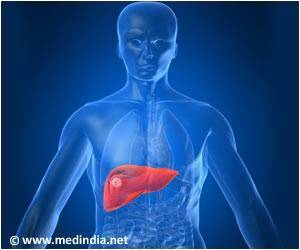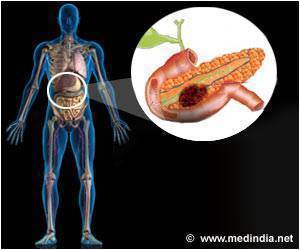Limiting cell death processes could help reduce some extent of brain and acute kidney tissue injury, found University of Pittsburgh scientists
Highlights
- New insights into the cell death process could help prevent asthma exacerbation and tissue damage in brain or kidney injury
- Ferroptosis, the highly regulated cell death programme can be uncontrolled in traumatic brain and acute kidney injuries
- Preventing Ferroptosis, by its blocking its initiation factors could prevent further injury to these organs
- Initiation factors such as increased OOH-phosphatidylethanolamines (OOH-PEs) and 15-lipoxygenases (15LOs) production Could be targeted to prevent further damage by cell death process
One way this is accomplished is through Ferroptosis, a highly regulated cell death program that uses iron ("Ferro" means iron), and was first discovered in 2012, explained senior author Valerian Kagan, Ph.D., D.Sc., professor in the Pitt Graduate School of Public Health's Department of Environmental and Occupational Health.
The work also was led by Sally Wenzel, M.D. director of the University of Pittsburgh Asthma Institute at UPMC, and Hülya Bayr, M.D., research director of Paediatric Critical Care Medicine at Children's Hospital of Pittsburgh of UPMC. To function harmoniously, the billions of cells in the body use a sophisticated and coordinated language to communicate. Last year, the team published two papers that uncovered the signalling language that cells use to initiate ferroptosis.
The communication process they found requires a group of naturally occurring oxidized phospholipids called OOH-phosphatidylethanolamines (OOH-PEs).
Phospholipids are the basic building blocks that constitute the cell membranes, which separates the inside of the cell from outside.
"Discovering ferroptosis was just the tip of the iceberg - it's essential that we learn how to keep it under control. If we want to do that, we must understand how it works," said Kagan.
In the new work, the team used a variety of methods, including a new technique called lipodomics, to discover that the production of OOH-PE is a major crossroads at which a cell decides whether to initiate ferroptosis.
Previous research had shown that OOH-PEs were made by a group of enzymes known as 15-lipoxygenases (15LOs).
In the course of its study, the team discovered that a protein called PEBP1 was acting as a "warden" controlling whether the 15LO enzymes made either OOH-PEs or another type of membrane building block. When the cell made increasing amounts of OOH-PEs, it initiated ferroptosis.
The researchers also used several cell culture experiments to demonstrate that PEBP1 and other key players in this pathway play a role in driving ferroptosis in several diseases, such as in kidney cells during renal failure, neurons in brain trauma and airway cells in asthma. Preventing PEBP1 from binding to 15LOs might be a way to prevent ferroptosis, says Kagan.
"Better treatments for traumatic brain injury and acute kidney injuries are desperately needed," said Bayr, co-senior author of the new work. "Gaining insight into these conditions at the molecular level is extremely crucial to developing new therapies."
In traumatic brain and acute kidney injuries, there is typically an ever-widening area of cell death, indicating that ferroptosis is continuing unabated, even after cells involved in the initial injury have been cleared, said Bayr, also a professor in Pitt's departments of Critical Care Medicine and Environmental and Occupational Health.
This points to a longer therapeutic window of opportunity during which the ferroptotic pathway could be targeted with drugs to halt these devastating injuries. A future therapy targeting ferroptosis could work differently for asthma, noted Wenzel, the lead author.
"Asthma is not just about stopping an attack, it's also about prevention - and both are a major unmet need among patients," said Wenzel, also a professor of medicine in Pitt's School of Medicine.
"Our study identified how ferroptotic death signals can damage the cells lining the airway. Targeting these pathways could lead to both preventative and treatment options for asthma exacerbation."
"And, by discovering how several key proteins interact with the phospholipid molecules to cause ferroptosis, that is what we did." Now we can move forward with the translational work of finding ways to limit ferroptosis and prevent the massive cell death that leads to catastrophic organ and tissue failure.
References
- Brent R. Stockwell'Correspondence information about the author Brent R. StockwellEmail the author Brent R. Stockwell, José Pedro Friedmann Angeli29, Hülya Bayir, Ashley I. Bush, Marcus Conrad, Scott J. Dixon, Simone Fulda, Sergio Gascón, Stavroula K. Hatzios, Valerian E. Kagan, Kay Noel, Xuejun Jiang, Andreas Linkermann, Maureen E. Murphy, Michael Overholtzer, Atsushi Oyagi, Gabriela C. Pagnussat, Jason Park, Qitao Ran, Craig S. Rosenfeld, Konstantin Salnikow, Daolin Tang, Frank M. Torti, Suzy V. Torti, Shinya Toyokuni, K.A. Woerpel, Donna D. Zhang. Ferroptosis: A Regulated Cell Death Nexus Linking Metabolism, Redox Biology, and Disease
, cell DOI: http://dx.doi.org/10.1016/j.cell.2017.09.021
Source-Eurekalert












